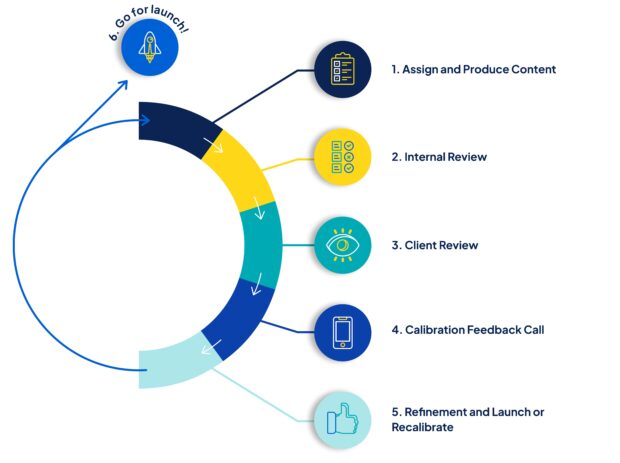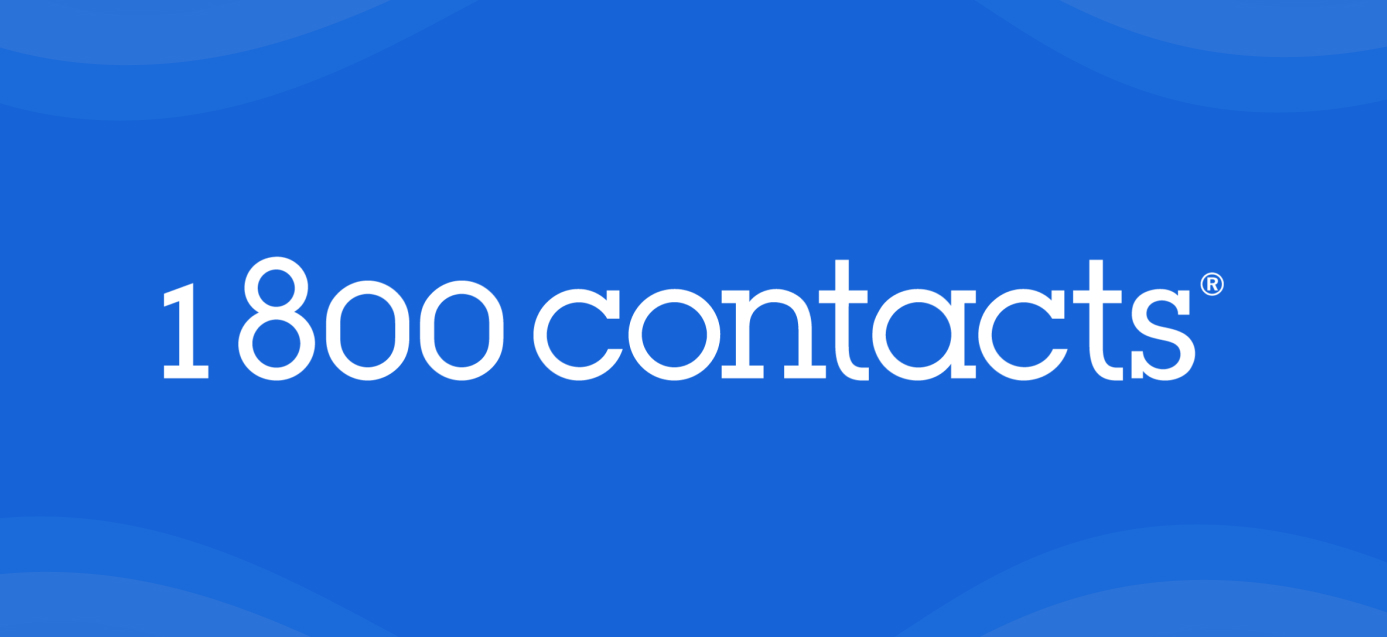
Ensure content and workflow precision through iterative feedback and adjustment.
What Is Calibration?
Calibration in content production is the process of aligning your work with the client’s vision. It ensures that the content meets the required quality, tone, style, and timing.
How Calibration Works
Calibration is the fourth phase of onboarding, following the working session, resource and workflow development, and team building. This stage involves testing content and workflows on a smaller scale to see how well they meet the client’s expectations. Feedback is then used to make targeted adjustments to content style, tone, and processes, ensuring everything is aligned with the client’s vision before full-scale production begins.
Here’s a high-level overview of the calibration process:

- Assign and Produce Content: Test how well the style guides, tools and other resources capture the content’s vision and requirements.
- Internal Review: Measure the writer’s and editor’s understanding against the content manager’s expectations.
- Client Review: Evaluate the content manager’s understanding against the client’s vision.
- Calibration Feedback Call: Gather positive and critical feedback to identify the strengths and weaknesses of the resources and processes.
- Refinement and Launch or Recalibrate: Repeat the process until alignment is achieved, then move into scaled production.
13 Tips for Effective Calibration
1. Rely on Your Resources
- Let the project and content briefs guide writers and editors.
- Calibration tests these resources to ensure they achieve the desired results.
2. Start Small, Scale Smart
- For long-form content: Calibrate with 2-3 articles using at least two writers.
- For short-form content: Calibrate with 5-10 pieces using at least three writers.
3. Timeliness Is Key
- Begin the calibration process within 3-5 days of the working session to keep insights fresh.
- Schedule the feedback call within 3 days of content delivery.
4. Face-to-Face Feedback
- Always hold a face-to-face call for the feedback session to prevent misalignment from relying solely on written comments.
5. Focus on Actionable Feedback
- Prioritize feedback that can be applied across the entire project, such as style guidelines or tone adjustments.
- Avoid overemphasizing feedback that only pertains to specific articles.
6. Set Clear Client Expectations
- Ensure clients understand that calibration is a test of the workflow and resources, not necessarily an example of the final output.
7. Agree on Readiness
- Both the client and the content team should agree they’re comfortable moving into ramp-up or full production after calibration.
8. Embrace Iterative Improvements
- Be prepared to make thoughtful adjustments based on feedback. Calibration is iterative, and fine-tuning is expected.
9. Maintain Internal Communication
- Communicate resource updates from the feedback call to the writers who created the content to ensure everyone stays informed.
10. Use On-Target Samples
- Once an on-target piece is created, include it as a sample in the project brief for future reference.
11. Continue Calibration in Ramp-Up
- For high-volume or large-team projects, continue calibrating internally with each new set of writers.
- Scale up those who demonstrate a strong understanding while starting slowly with new writers and editors.
12. Set Proper Expectations for Yourself
- Understand that calibration can be a bumpy process. Misalignments may occur due to unclear expectations or misunderstandings.
- Remember, calibration is meant to identify and resolve these issues.
13. Stay Flexible
- Expect that adjustments may still be needed after calibration is complete.
- Treat your project brief as a living document that will evolve over the life of the project.
Calibration Feedback Questionnaire
The calibration feedback questionnaire is a critical supplement to the face-to-face feedback process.
It serves two essential purposes:
- It allows the production team to review client feedback in advance and prepare questions for the calibration feedback call.
- It documents the client’s approval, providing a reference point for any future revisions.
Calibration Feedback Questionnaire
We value your feedback and insights. Please take a few moments to complete this questionnaire to help us refine our processes and ensure we meet your expectations. Your responses will be reviewed before the calibration feedback call to prepare for an in-depth discussion.
Your Name and Role:
Company or Project Name:
Names and Roles of Others Who Reviewed the Content:
Rating Calibration Deliverables:
From 0 to 10, with 10 being exactly what you wanted, how would you rate the calibration deliverables compared to your vision of on-target content?
Rating Scale:
- 0 – Not even close
- 1
- 2
- 3
- 4
- 5
- 6
- 7
- 8
- 9
- 10 – Perfect!
Please consider the different components that go into good content creation. Check off all items that met your expectations and leave blank anything that missed the mark. If an item doesn’t apply to your content, please check it.
- Writing Quality
- E-E-A-T Principles
- Voice
- Content Structure
- Non-Keyword SEO
- Keyword Usage
- Internal/External Linking
- Flow
- Consistency
- Organization
- Logic
- Expertise
- CTA
- Introduction
- Conclusion
- Adherence to Instructions
- Length
- Delivery Format
Feedback on Unchecked Items:
Please provide brief feedback on what must be done to align with your expectations on anything left unchecked. Give as much detail as you’d like, but note that you’ll have the opportunity to go into detail during the calibration feedback call.
Feedback on Checked Items:
Do you have feedback on the areas you checked that would help us produce even better results? If so, summarize it here. We’ll go into more detail during the call.
Comfort With Moving Into Scaled-Up Production:
Based on these deliverables, do you feel comfortable moving into scaled-up production?
- Yes
- No
- Not sure. Let’s discuss during the call.
Uncovered Issues or Bottlenecks:
Has the calibration round uncovered issues or potential bottlenecks that weren’t considered prior to this point? For example, the need for brief creation, the time it takes to review deliverables, the number of people reviewing content, the need for images, or the need for a more customized deliverable?
Additional Feedback, Questions, or Concerns:
Please provide any feedback, questions, or concerns not already covered in your prior responses.
Contact page copy:
Calibration is where all the preparation comes together and production begins, but a crawl-walk-run approach is key to ramping up an at-scale project. For questions on calibration or client onboarding, contact your account or content manager. Prospective clients can connect with us at sales@stellarcontent.com.
